Our Wisconsin orthopedic specialists have been specially trained to treat frozen shoulder syndrome, or adhesive capsulitis. From explaining the symptoms and diagnosing the syndrome to performing both non-surgical and surgical treatment options, the team at Hand to Shoulder Center of Wisconsin has frozen shoulder syndrome patients, covered. Contact us today for more information or with any questions.
Frozen Shoulder Syndrome
Also referred to as adhesive capsulitis, frozen shoulder syndrome involves a painful stiff shoulder with inflammation that results in tightening of soft tissue around the shoulder joint. In the early stages, this can be a very painful condition. At rest and during use, extreme pain can be felt and with certain movements the arm can feel as though it is “stuck”. Active (the ability to move your arm) and passive (the ability to have someone else move your arm) range of motion is affected, restricting movement of your arm. It is unclear the exact cause of frozen shoulder syndrome, nonetheless it has been found to affect two to five percent of the general population. Fairly common factors that can increase your risk to frozen shoulder includes a history of shoulder trauma, long periods of shoulder immobilization, diabetes, stroke, Parkinson’s disease and some thyroid disorders. It typically affects one shoulder (left or right) but can develop in both. Women are found to be more affected than men.
Frozen Shoulder Symptoms
Significant pain and stiffness is felt in the shoulder joint and rotator cuff area when the arm is active and at rest. In most cases, the pain is not related to an injury or event. Attempting to avoid the pain by holding the arm by the side can often lead to further stiffness. Frozen shoulder symptoms normally pass through three stages and can take twelve to twenty-four months to resolve. The three stages are:
- Painful stage – the shoulder gradually stiffens and the pain intensifies during the first four to nine month duration. Mild pain typically turns to chronic pain that often intensifies at night and when it is cold.
- Frozen stage – the shoulder is painful and stiff when in use however during immobilization, pain can subside. This stage typically will last four to twelve months.
- Thawing stage – the shoulder begins to slowly and steadily increase mobility. Pain lessens and arm mobility improves. This stage can last up to several months.
Frozen Shoulder Diagnosis and Treatment
The physicians at Hand to Shoulder Center of Wisconsin are fellowship-trained orthopedic surgeons with additional knowledge and experience in finger, hand, wrist, elbow, and shoulder treatment. At your initial exam a thorough medical evaluation is performed. Medical history and past and present shoulder injuries and concerns are discussed. During the evaluation, active and passive range of motion are measured visually and physically on the affected shoulder and the opposite shoulder (Fig. 1-2). Measurements are noted and compared to standard shoulder values. Our experienced physicians can usually diagnose frozen shoulder based on history and clinical presentation, however, an x-ray is often performed to rule out other shoulder conditions. Once diagnosed, treatment options are discussed.
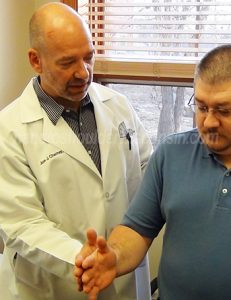 Figure 1: Active and passive range of motion are measured
|
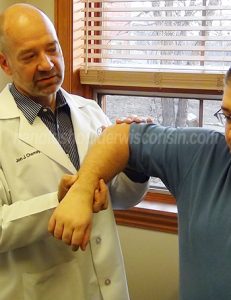 Figure 2: Active and passive range of motion are measured |
Non-surgical and Surgical Treatment
Frozen shoulder can eventually resolve over time; the pain may improve but sometimes the stiffness will remain if left untreated. Patience is the key for non-surgical and surgical treatment of frozen shoulder syndrome. For mild cases, non-surgical treatment is an option. Physical or occupational therapy involving range of motion, joint mobilization techniques, and exercise can be very beneficial in restoring shoulder mobility (Fig. 3-5). Patients may also benefit from the use of nonprescription over-the-counter pain medications and icing for 10 to 15 minutes several times a day. Sometimes a cortisone injection into the shoulder joint may be helpful in reducing the pain and allowing the patient to further participate in therapy and perform home stretching exercises.
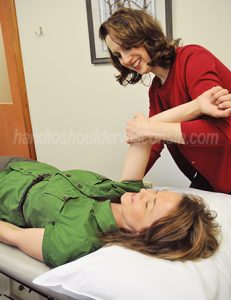 Figure 3: A licensed therapist works with patient to restore shoulder mobility |
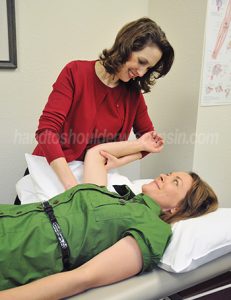 Figure 4: A licensed therapist works with patient to restore shoulder mobility |
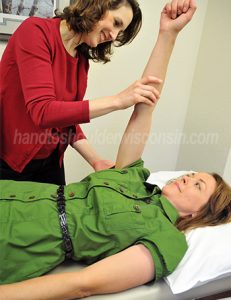 Figure 5: A licensed therapist works with patient to restore shoulder mobility |
In severe cases, surgery may be recommended, however, this should only be performed in the late stage of frozen shoulder syndrome. Shoulder surgery is usually performed in the thawing stage when range of motion has failed to progress. Surgical options include closed manipulation under anesthesia (MUA) and selective arthroscopic capsular release. Closed manipulation is performed under anesthesia with our experienced physician forcefully manipulating the arm at the shoulder joint to loosen the restrictions. Arthroscopic shoulder surgery is performed under anesthesia with small incisions made in the shoulder joint. A special instrument called an arthroscope is inserted through an incision. Small surgical instruments are inserted and the tightened tissue is released (cut) and if detected, scar tissue is removed. The shoulder is moved various directions to insure the motion has been restored and the incisions are closed. Physical or occupational therapy is essential after both manipulation surgery and arthroscopic shoulder surgery to restore and regain function, range of motion, and strength in the arm.
Both closed manipulation and arthroscopic surgeries are performed at Woodland Surgery Center, adjacent to Hand to Shoulder Center in Appleton, WI, and the three local Fox Valley hospitals.